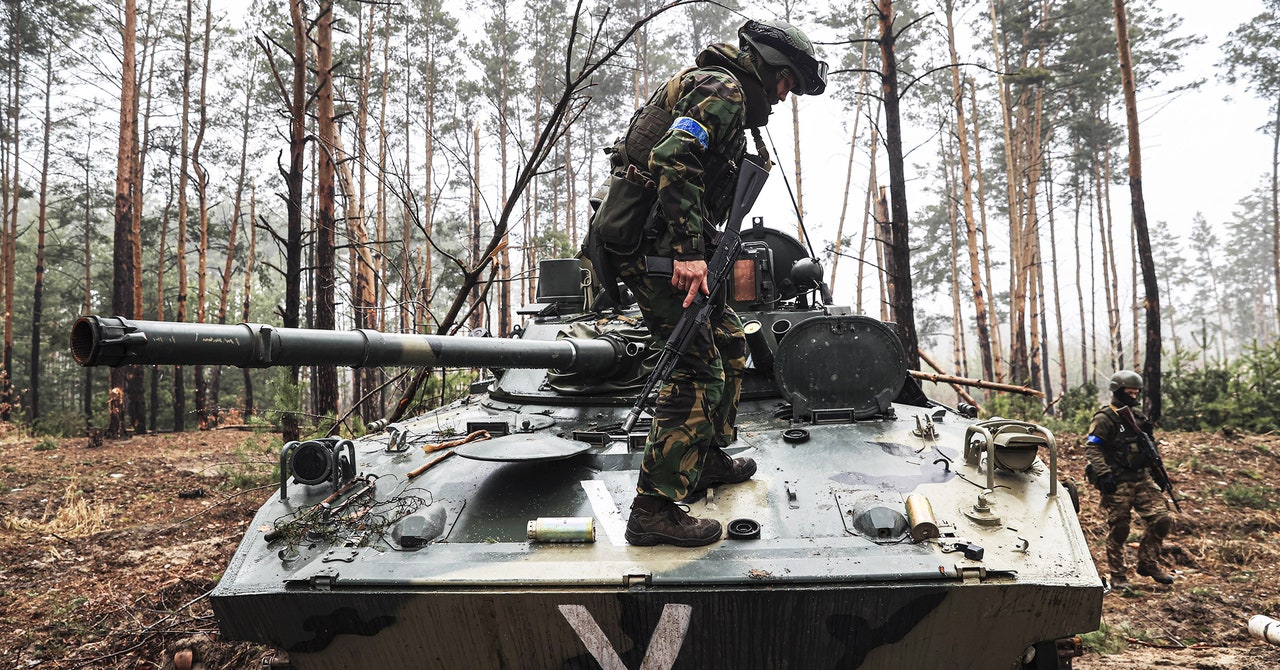A radio broadcast between several Russian soldiers in Ukraine in early March, captured from an unencrypted channel, reveals panicked and confused comrades retreating after coming under artillery fire.
“Vostok, I’m Sneg 02. On the highway we have to turn left, fuck,” says one of the soldiers in Russian with codenames meaning “East” and “Snow 02”.
“I get it. There’s no need to continue. Switch to defense. Over,” replied another.
Later, a third soldier tries to contact another codenamed “South 95”: “Yug 95, are you in contact with a senior? Warn him on the highway artillery fire. Artillery fire on the highway. Don’t go by column. Move carefully.”
The third Russian soldier continues, increasingly agitated: “Get on the radio. Tell me your situation and the location of the artillery, approximately what weapon they are firing.’ Later, the third soldier speaks again: “Call you square. Yug 95, answer my questions. Name your square!”
While the soldiers spoke, an AI listened. Their words were automatically captured, transcribed, translated and analyzed using various artificial intelligence algorithms developed by Primer, an American company that provides AI services to intelligence analysts. While it is not clear whether Ukrainian forces also intercepted the communications, the use of AI systems to conduct large-scale surveillance of the Russian military shows the growing importance of advanced open source intelligence in military conflicts.
Some unsecured Russian broadcasts are posted online† translated, and analyzed on social media. Other data sources, including smartphone video clips and social media posts, were similarly examined. But using natural language processing technology to analyze Russian military communications is particularly new. For the Ukrainian military, understanding intercepted communications still usually means human analysts working in a room somewhere, translating messages and interpreting commands.
The tool developed by Primer also shows how valuable machine learning can become for parsing intelligence information. Significant progress has been made over the past decade in AI’s capabilities in image recognition, speech transcription, translation and language processing thanks to large neural network algorithms that learn from huge tranches of training data. Out-of-the-box code and APIs that use AI can now transcribe speech, identify faces, and perform other tasks, often with high accuracy. Given Russia’s numerical and artillery advantages, intercepting communications could make a difference to Ukrainian forces on the ground.
Primer already sells AI algorithms trained to transcribe and translate phone conversations, as well as algorithms that can figure out key terms or phrases. Sean Gourley, CEO of Primer, says the company’s engineers modified these tools to perform four new tasks: collect audio captured from web feeds broadcasting communications captured with software that emulates radio receiver hardware. ; to remove noise, including background chatter and music; to transcribe and translate Russian speech; and to highlight important statements relevant to the situation on the battlefield. In some cases, it involved retraining machine learning models to recognize everyday terms for military vehicles or weapons.
The ability to train and retrain AI models on the fly will become a critical advantage in future wars, Gourley says. He says the company has made the tool available to third parties, but declined to say who. “We won’t say who uses it or what they use it for,” Gourley says. Several other US companies have provided technologies, information and expertise to Ukraine in its fight against Russian invaders.
The fact that some Russian troops use unsecured radio channels has taken military analysts by surprise. It seems to indicate an operation with insufficient resources and preparation, said Peter W. Singer, a senior fellow at the New America think tank who specializes in modern warfare. “Russia used open communications interceptions to attack its enemies in previous conflicts such as Chechnya, so they, of all forces, should have known the risks,” Singer said. He adds that these signals could undoubtedly have helped the Ukrainians, although the analysis was most likely done manually. “It points to communication equipment malfunctions, some arrogance and possibly the level of desperation at the higher levels of the Russian military,” he added. Mick Ryana retired Australian general and author.

